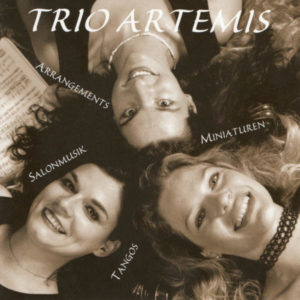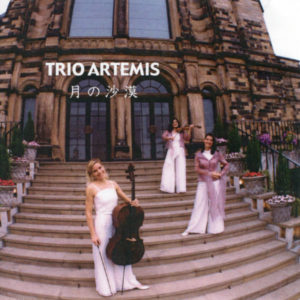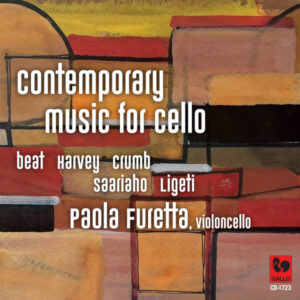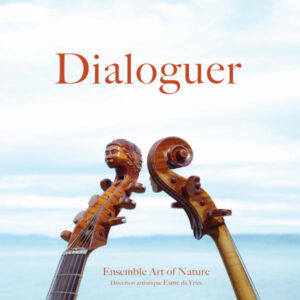Extraits / Excerpts
Fauré: Cello Sonata No. 1, Op. 109 - Sérénade, Op. 98 - Cello Sonata No. 2, Op. 117 - Romance, Op. 69 - Rolf Looser - Urs Voegelin
Gabriel FAURÉ: Cello Sonata No. 1 in D Minor, Op. 109: I. Allegro – II. Andante – III. Final – Allegro commodo – Sérénade, Op. 98 – Cello Sonata No. 2 in G Minor, Op. 117: I. Allegro – II. Andante – III. Allegro vivo – Romance, Op. 69
Rolf Looser, Cello – Urs Voegelin, Piano
Gabriel FAURÉ (1845-1924)
“Sir, not only do I love, admire, adore your music, I was and still am in love with it. Long before you knew me, you used to thank me with a smile in concert, when my noisy enthusiasm forced to a fifth bow your disdainful indifference to success. Last evening, I became inebriated for the first time with Le parfum impérissable (one of Fauré’s melodies), and it is a dangerous intoxication, for since then I have turned to it every day. It is at least a clear-sighted drunkenness.”
Proust, Marcel: letter addressed to G. Fauré in 1897, in: Correspondance Générale, volume 2, p. 102, Ph. Kolb, publisher (in French).
The two Sonatas for Cello and Piano, opus 109 and 117, written between 1917 and 1921 in St. Raphael and Nice, reflect and form the peculiarity and diversity characteristic of the style marking the last period of a long artistic life. A life in which things had time to mature without being hassled by impatience or ambition. This is equally true for Fauré’s entire musical creation: the salutary distance he could maintain towards himself and his work—a virtue every true artist should possess. His biography reveals the same phenomenon, once again proving the rare coherence between his life and his art.
Beyond appreciating the purely musical values of these unique late creations, they deserve further consideration and reflection, as surprisingly little attention has been given to them so far.
In his “Dernière manière”, Gabriel Fauré creates a paradoxical synthesis in his musical writing, uniting a strangely severe sobriety and simplicity with an emotionality that, at times, reaches ecstasy. This “Dernière manière” is not only the concluding creation of his own musical career but also brings to a close the era of Western musical tradition embedded in tonality and modality.
Fauré, therefore, can be seen as having carried a double mission, increasing his significance. It might very well have been Fauré who was chosen to play the last grand games on the checkerboard of modal tonality. Towards the end of his life, this brought him to step near the limits of this domain.
He did so with intuition and the superior sensitivity of one whose vitality expressed innumerable nuances, with the confidence of a sleepwalker, as much tact as boldness, often transgressing these limits as if unknowingly—or did these limits simply not exist for him? Through this path of evolution, he became an innovator, where others in his time—the revolutionaries—felt they had to leap over or break down these barriers.
Let us take a closer look at some of the traits of his musical writing, particularly characteristic of the last period of his creation, which opens with his song cycle Chanson d’Eve (op. 95, 1906) and his only opera, Pénélope (1907-1912), written while already suffering from severe hearing loss.
At the counterpoint level, the predominance of his use of simple, almost lapidary, two-voice imitations (canons or free stretto imitation) is clearly apparent, giving the impression of two birds of the same species migrating toward the same destination (this can be seen especially in the first two movements of the sonatas).
In harmony, an analysis of its development reveals a fascinating audacity in the use of new combinations and delicate linking elements. The ambiguous enharmonic intervals of the tempered system are employed boldly, freeing unexpected paths and allowing colorful harmonies to unfold without ever threatening coherence or musical logic. The piano often weaves these harmonies tightly into a precious fabric of glittering figurations, as though time itself had been covered by a delicate skin.
In melody, the striking feature is the unusually large range, sometimes covering nearly three octaves (as in the second theme of the first movement of opus 109). Large intervals, especially the octave, play a prominent role, used as melodic steps.
In modulations, Fauré often arranges his subtle, yet forceful, modulations sequentially, creating spirals that ascend or descend, seemingly aiming at mysterious, unseen goals.
In his endings, typical of Fauré are the perorations of his movements, where melody and harmony, having returned from their distant voyage, circle around the tonic at length before coming to rest in the home harbor of tonality.
These last four qualities evoke a comparison with Bruckner. Indeed, Fauré seems to be the only Latin musician who, within his private world, occupies a position almost brotherly to the great Austrian master; both are the great post-romantic classicists.
To take on the tasks that these two have set for themselves, one requires a superior form of naivety. It is well known that Bruckner possessed this in vast and moving quantities. We are less familiar with this trait in Fauré, though it appears through a charming simplicity, a beautiful calm, accompanied by subtle humor. In 1906, while working “avec ravissement” in his hotel room in Stresa on the composition of Chanson d’Eve, he writes to his wife:
“My text is difficult… One must make God the Father speak, and then Eve, his daughter. Oh, it is not easy to have to deal with such important characters. And yet, it would seem to me much more impossible to make sing Mr. and Mrs. Dubois. A gray silk day, yesterday. Very hot, very muggy, and I, in my flannel vest, worked for seven hours and solved the problem of making God sing. When you see what makes His eloquence, you will all be surprised that it took me so long to find this. But alas… nude simplicity, in our day and age, is the most difficult thing to imagine.”
Rolf Looser
Translation: Helene Bachmann
- Categories
- Composers
- Interprets
- Booklet












